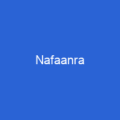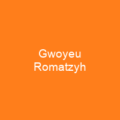Nafaanra: A Language on the Edge
Imagine a language that weaves through the heart of Ghana and Ivory Coast, spoken by nearly 90,000 people who call themselves Nafana or Banda/Mfantera. This is Nafaanra, a Senufo language with its own unique charm and complexity.
Nafaanra features a subject-object-verb basic word order, a noun class system, and three tones. These linguistic elements make it a fascinating study in the rich tapestry of African languages. But what exactly does this mean for those who speak Nafaanra? Let’s dive into its intricacies.
The Vowel System
Nafaanra has seven oral vowels and five nasalized ones, each with the potential to change meaning significantly. For instance, sɛ means ‘to go,’ while sɛɛ translates to ‘fetish.’ This dual nature of vowels is a testament to the language’s precision and depth.
The Consonant System
The consonant system in Nafaanra mirrors that of other Senufo languages, with only one attested palatal fricative, /ç/. This unique sound places it between Northern Senufo languages like Mamara and Supyire, which have both /ç/ and its voiced counterpart /ʝ/, and Central and Southern Senufo languages such as Karaboro, Senari, and Djimini, which lack palatal fricatives altogether.
Tone and Grammar
Like many Niger–Congo languages, Nafaanra has three contrastive tones: High, Mid, and Low. These tones are crucial for meaning, especially in the imperative tense of high tone verbs. The language’s grammar is equally complex, with a noun class system that affects pronouns, adjectives, and copulas.
Word Order and Tense
The basic word order in Nafaanra is subject-object-verb (SOV). However, the use of preverbal particles for tense and aspect adds layers to this structure. For example, past tense is marked by ná, while future tense is indicated by wè. The absence of a preverbal particle often implies recent past.
Aspect and Fusion
The language’s aspect system is particularly interesting. Two classes of verbs can be differentiated based on their behavior in aspectually marked sentences, with one class having two distinct forms while the other does not distinguish between completive and continuative aspects. Pronominal subjects often fuse with preverbal particles, creating a seamless flow that reflects the speaker’s intent.
Numbers and Colors
Nafaanra has a simple yet effective system for numbers, derived from base words like kɔɔ (five) and mbɔ (ten). The three basic color words are wɔɔ (black), finge (white), and ɲiɛ (red). These elements, though seemingly small, contribute significantly to the language’s richness.
Linguistic Publications
While there is relatively little published on Nafaanra, key works include Delafosse’s 1904 notes and Rapp’s German-Nafaanra word list from 1933. More recent contributions come from Jordan (1980b), Painter (1966), and Hartell (1993). These publications provide valuable insights into the language’s structure and usage.

Nafaanra, with its unique features and complex grammar, stands as a testament to the diversity of African languages. As we continue to explore and document these languages, we uncover not just words but entire worlds of culture and history.
So, next time you hear about Nafaanra, remember that it’s more than just a language—it’s a bridge between people, a reflection of their lives, and a window into the rich cultural heritage of West Africa.
You want to know more about Nafanan language?
This page is based on the article Nafanan language published in Wikipedia (retrieved on March 12, 2025) and was automatically summarized using artificial intelligence.






